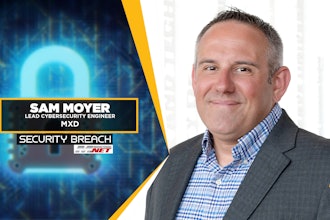
The way we buy software has changed. We’ve moved away from one-and-done purchases our IT teams maintain toward subscription-based Software as a Service (SaaS), which involves continual support, development, growth and innovation.
The product itself and its functionality remains important, but we must put equal weight on the provider’s reputation for service, support, security and more.
Today, a great software provider should:
1. Start with your actual needs, challenges and desired outcomes.
When you’re vetting software providers, they should ask questions about your challenges and concerns, as well as the opportunities you want to capture. They should be interested in ensuring their product and services are the best choice for your business, providing the functionality you need within your timeline and budget. And they should help you map their product to your business needs both strategically and technically, with flexibility to customize their solution and services as needed.
A software vendor should always understand that your success is their success.
2. Focus on ROI.
To that point, your provider should focus on how they can deliver a solution that drives sustainable ROI for your organization. Ultimately, that means creating a more profitable bottom line and freeing up your people to focus on driving the top line. But that comes in many forms, including helping you provide a seamless customer experience, improving your resiliency in the face of disruption (such as the supply chain uncertainty we’re facing today), and lowering the costs of everyday business.
3. Understand your business and have experience in your industry.
It’s best to work with a provider that is familiar with your business and industry and has been in operation long enough to prove their value proposition. Doing so means you’ll work with individuals who can better deliver on your goals and expectations. They should have several references in your industry vertical. They should also have extensive experience working with the products they provide and deep knowledge of their own industry space.
4. Have a competitive reputation in their market.
Evaluate the reputation of the software provider to understand how they truly compare in terms of product, service and support. Check their ratings on G2, Capterra and similar review sites. Also consider their NPS score. Some companies are knocking it out of the park in these areas, with proven reputations and superb trajectories for growth and innovation. When it comes to this type of business relationship, such expected longevity and strength in the market is key.
5. Promote a great company culture.
The culture at your provider’s organization directly affects the quality of service and support you experience. If a company doesn’t have a good culture, you might see high turnover and unsatisfied employees. This doesn’t lend well to great and attentive ongoing support. Because a relationship with a SaaS company is often years-long, you want to be able to establish healthy and reliable relationships.
Evaluate the provider for company culture by reading employee reviews on sites like Glassdoor and seeing how they represent their culture on social media and their website. Do they appear to live out their customer-facing values internally?
6. Simplify the implementation and onboarding processes.
The provider should provide a high level of support and handling during the implementation and onboarding processes, making them as simple and expedient as possible. Though your team will have responsibilities in managing the implementation internally, you shouldn’t feel that you’re on your own or need tremendous internal IT effort to get the software up and running. The provider should shoulder much of the effort so your IT team isn’t tied up with implementation and can focus on daily business operations.
Your provider should work closely with you and your team to implement and onboard within your schedule using implementation and process methods that fit your preferences, with minimal disruption to your operations. They should also help match the solution to current business process and support training efforts such that employees don’t need to completely change their workflows to use the software.
A simple implementation and onboarding also leads to faster time-to-value in using the solution and seeing a benefit for your organization.
7. Stick by your side after implementation.
Look for a provider with skin in the game that plans to maintain a dedicated relationship with your business post-implementation. They should work with you to meet and exceed your goals, better serve your customers, capture ROI and problem-solve. You should have a direct contact you can access easily and expect a quick response from, and they should be easy to work with. In the best-case scenario, the provider will take a proactive approach to help you progress toward your goals and review your performance regularly.
8. Listen to your needs as they change and respond with solutions.
The provider should work directly with you, continually communicating with you and other customers to understand the best next steps for development, innovation and problem-solving for your business. They should work to release relevant and useful updates that help you get more out of it, and answer for actual concerns you and other customers have within their capabilities.
Your provider should also be looking to scale their value throughout your operations to deliver more value to your business and customers. Where else can automation benefit you?
9. Provide reliable backend and IT support.
With SaaS solutions, you’re entrusting much of your data and security to the software provider. Trust is critical. They must be able to guarantee a high level of security, reliability, uptime and business continuity so you never miss a beat. They should be able to support your operations 24/7, ensuring the software runs smoothly in the background so you can focus on your business goals.
The Final Word
 Marcello
Marcello
Judd Marcello, EVP & CMO at Conexiom. Judd has more than 25 years of B2C and B2B marketing leadership experience throughout the United Kingdom, Americas, Australian and European markets. Judd leads all facets of marketing for Conexiom. Reach out to Judd at conexiom.com.






















